
Attention!!!
Are You a Working Professional or House Wife?
Do You Want to Feel Healthier, Grow Professionally, and Discover Your Unique Identity? Start Your Yoga Journey Today!?
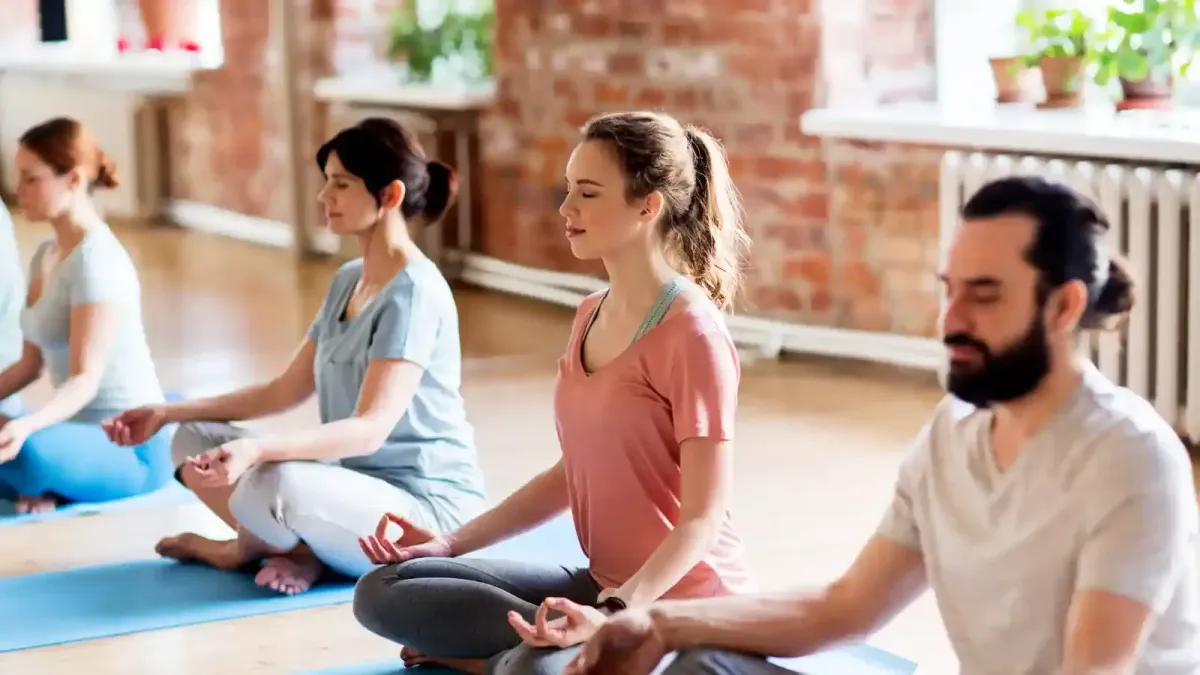
Ready To Change Your Life? Let Yoga Guide Your Journey To Wellness And Growth.
Join Our Exclusive Webinar to Rediscover Balance, Health, and Purpose
DATE: 1st Dec 2024
TIME: 11:00 AM To 2:00 PM
LIVE: ON ZOOM
LANGUAGE: ENGLISH
Feeling Overwhelmed By a Busy Work Life & Constant Stress?
Being a Busy Professional, Are You Facing Issues Related To Your
HEALTH, WELLNESS & WORK-LIFE BALANCE

High-Stress Jobs: Constant pressure to meet deadlines, handle responsibilities, and manage workloads.
Lack of Time for Fitness: Busy schedules make it difficult to prioritize regular exercise or attend fitness classes.
Poor Posture: Prolonged sitting, especially with improper ergonomics, can lead to back, neck, and shoulder pain..
Sleep Issues: Stress and irregular schedules can disrupt sleep patterns, resulting in insufficient or poor-quality sleep.
Difficulty Disconnecting: The expectation to be "always available" can lead to burnout and challenges with setting boundaries..
Poor Work-Life Balance: Managing professional and personal responsibilities can feel overwhelming..
Mental Health Challenges: Chronic stress and lack of self-care can lead to anxiety, depression, or burnout..
Reduced Flexibility and Mobility: Lack of movement and stretching can cause stiffness and reduce physical agility..
If you’re looking for lasting solutions to these challenges, this webinar is for you.
Always Taking Care of Others? It’s Time to Take Care of YOU!
Being a Housewife With a Sedentary Lifestyle,
Are You Looking To Boost Your Energy, Get Fit, And Discover Your Unique Identity?

Low Physical Activity: Daily routines may involve limited physical movement, leading to reduced fitness levels and flexibility..
Stress and Mental Fatigue: Constant multitasking, managing family needs, and household responsibilities can lead to high levels of stress.
Potential Weight Gain: Limited exercise and irregular eating patterns can contribute to gradual weight gain and health concerns.
Feelings of Isolation: Without regular social interaction or external work, many housewives experience isolation or loneliness.
Lack of Motivation or Energy for Exercise: The physical demands of household tasks can make dedicated exercise feel exhausting or unappealing.
Overwhelm and Burnout: Balancing household duties, family care, and sometimes additional responsibilities can lead to mental and physical burnout.
Limited Time for Hobbies or Personal Growth: With many responsibilities, time for personal interests, hobbies, or skill-building can be scarce..
Difficulty Finding Personal Identity: Some housewives may feel that they lack a sense of individual purpose outside of family or household roles.
If you’re looking for lasting solutions to these challenges, this webinar is for you.
Why You Should Join This Webinar?
Personalized for Busy & Sedentary Lifestyles: Techniques adapted for tight schedules and different fitness levels through yoga.
Build Your Unique Identity: Stand out in the yoga community with personalized training and advice.
Life Transformation Guidance: Learn how to turn your passion for yoga into a fulfilling
profession.
Recognized Instructor: Taught by an experienced instructor with a track record of student success.
How can I get certified as a yoga teacher?
How do I start without any prior experience?
Can I really make a career out of yoga that supports me financially?
Many More...?
You’re not alone with these questions, and I’m here to help
Benefits of Joining This Webinar

Health Benefits
Enhanced Flexibility and Strength: Learn yoga poses that improve flexibility, muscle tone, and physical strength.
Improved Posture and Reduced Pain: Practice techniques that help correct posture and relieve pain, especially in the back, neck, and joints.
Better Cardiovascular Health: Engage in gentle exercises that support heart health and circulation.
Boosted Immune System: Strengthen your immune function through stress-relieving practices that benefit overall health.
Wellness Benefits
Stress Relief: Learn breathing and relaxation techniques to effectively manage and reduce stress.
Improved Sleep Quality: Discover relaxation practices that promote better, deeper sleep.
Balanced Energy Levels: Experience sustained energy and reduced fatigue throughout the day.
Emotional Resilience: Cultivate emotional balance, enhancing your ability to handle life’s challenges calmly and mindfully.
Personal Growth Benefits
Increased Self-Confidence: Overcome personal limits, building confidence in both physical and mental abilities.
Mindfulness and Self-Awareness: Develop a deeper connection with yourself, promoting inner peace and presence.
Goal Setting and Discipline: Yoga encourages consistent practice, which strengthens self-discipline and personal goal-setting.
Mind-Body Harmony: Achieve a holistic balance of physical health and mental clarity, supporting overall self-growth.
Alternative Career Benefits
New Career Opportunities: Gain foundational knowledge for starting a career in yoga as an instructor or wellness coach.
Flexible Work Options: A yoga career allows you to set your schedule and work independently, whether through classes, online sessions, or workshops.
Growing Industry Demand: Yoga and wellness are in high demand, offering a promising and sustainable career path.
Opportunities to Inspire and Transform Lives: Share your passion for yoga and help others improve their lives, bringing personal fulfillment and a sense of purpose.
Personal Branding and Recognition: Learn how to create a unique identity in the wellness field, building a personal brand that can attract students and clients.
What Will You Learn?
Yoga Techniques for Flexibility & Strength

Mindfulness &Stress Management Practices
Tips for Building a Sustainable Yoga Routine

Professional Guidance on Establishing a Yoga Career

Creating Your Unique Yoga Identity
Who Should Join This Webinar?
Busy Professionals Seeking Stress Relief: Individuals in high-stress jobs who want tools to manage stress, improve focus, and boost productivity.
Housewives or Homemakers Looking for Self-Care: Those balancing household duties who need effective methods for self-care, relaxation, and overall well-being.
Aspiring Yoga Instructors: People passionate about yoga who are interested in becoming certified instructors or wellness coaches and need guidance on starting a career.
Individuals Facing Health Challenges: Anyone dealing with issues like chronic pain, poor posture, or fatigue, looking for a holistic approach to improve physical and mental health.
Students and Young Adults Exploring Career Paths: Young adults considering wellness fields who want an introduction to yoga as a potential career.
Fitness Enthusiasts Looking to Deepen Their Practice: People already into fitness who want to integrate yoga into their routine for greater flexibility, strength, and mental clarity.
Retirees Seeking Purposeful Engagement: Individuals who are retired and interested in enhancing their health, learning new skills, or possibly exploring yoga as a part-time endeavor.
Individuals Seeking Personal Growth: Anyone focused on personal development, looking to cultivate self-awareness, discipline, and emotional resilience through a dedicated wellness practice.
Meet Your Instructor
"Namaste! I’m Gaurav Negi, Founder & director of Rehab Yoga and an internationally certified yoga teacher with over a decade of experience. "Over the years, I’ve helped thousands of yoga enthusiasts go beyond just practicing yoga—they've made yoga their purpose. And that’s the beauty of this path: yoga not only enhances your life, but it also empowers you to bring positive change to others.
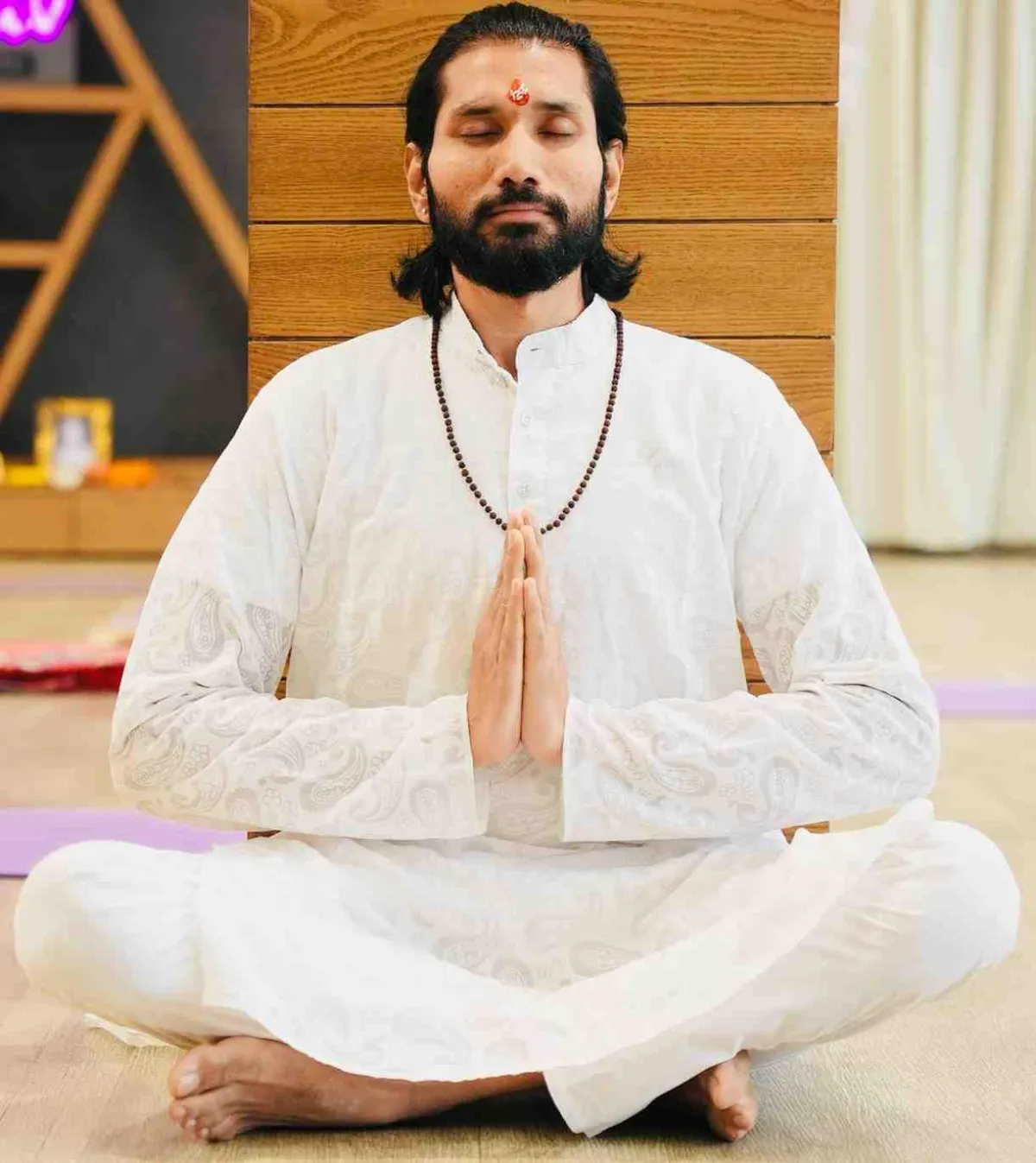
Gaurav Negi – Founder Rehab Yoga
Gaurav Negi was born and brought up in India and started practising Yoga & Ayurveda in childhood. Since his first experience with professional Yoga teaching, he realized the need to spread Yoga & Ayurveda knowledge to more people to bridge the gap between the general population and medical experts.
People nowadays have the wrong daily routine, physical postures, and diet, thus illnesses and diseases are cascading faster everywhere due to a lack of knowledge about human body functions.
He has then created various courses on Posture Alignments, Props work, Yoga Anatomy & Physiology, Muscle Imbalance Correction, Injury & Pain Management, Pranayama, Meditation, Therapy, and Ayurveda with a philosophy that "An ounce of prevention is worth more than a pound of cure".
His amazing work has been recognized by Asia Fitness Conference in Thailand with the Personal Trainer of the Year award for spreading health and wellness in society.
He has been invited to various yoga studios/schools around the world including, the UK, Europe, Australia, UAE, the Philippines, China, Japan, Indonesia, Vietnam, Sri Lanka and many more. In 2017, he also opened his Rehab Yoga School, intending to share his knowledge of Yoga, Fitness, Rehabilitation, and Ayurveda with more people.
Since then, he has reached the life of thousands of people around the globe. (Offline & Online) All Rehab Yoga courses encompass all his knowledge and cover all the vital elements required for Holistic Health and well-being in modern times.
Testimonial
Hear From Those Who Transformed Their Lives
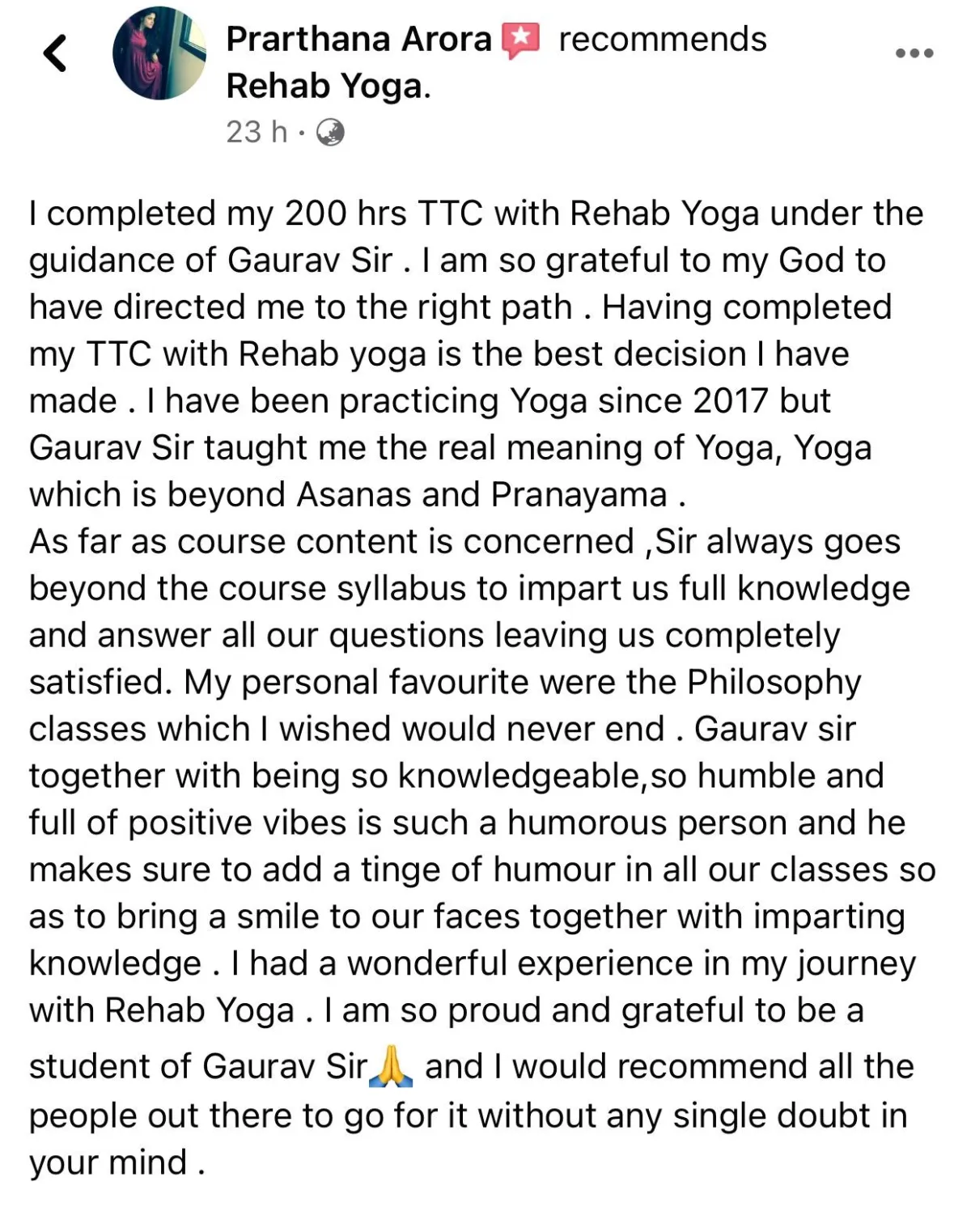
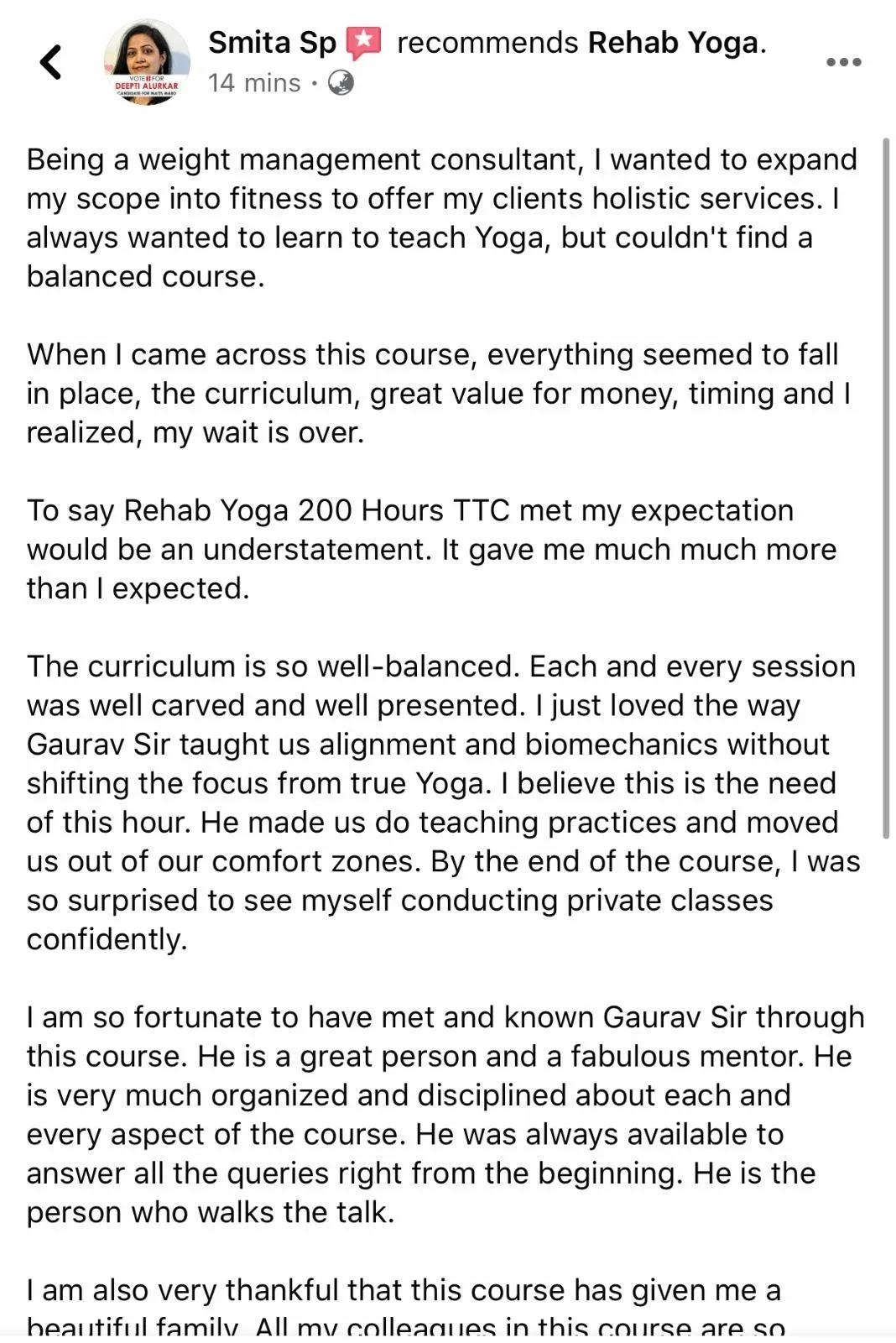
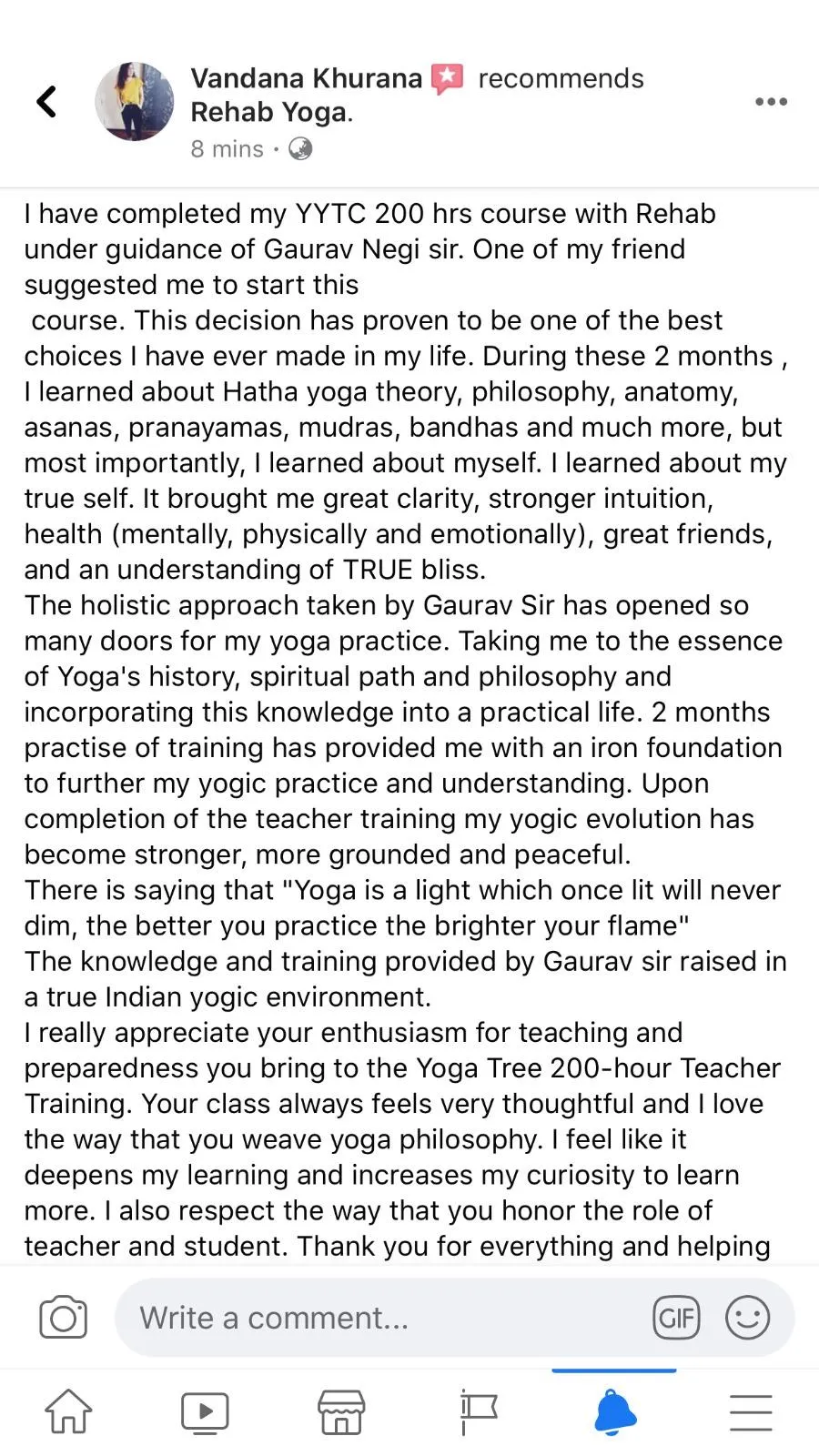
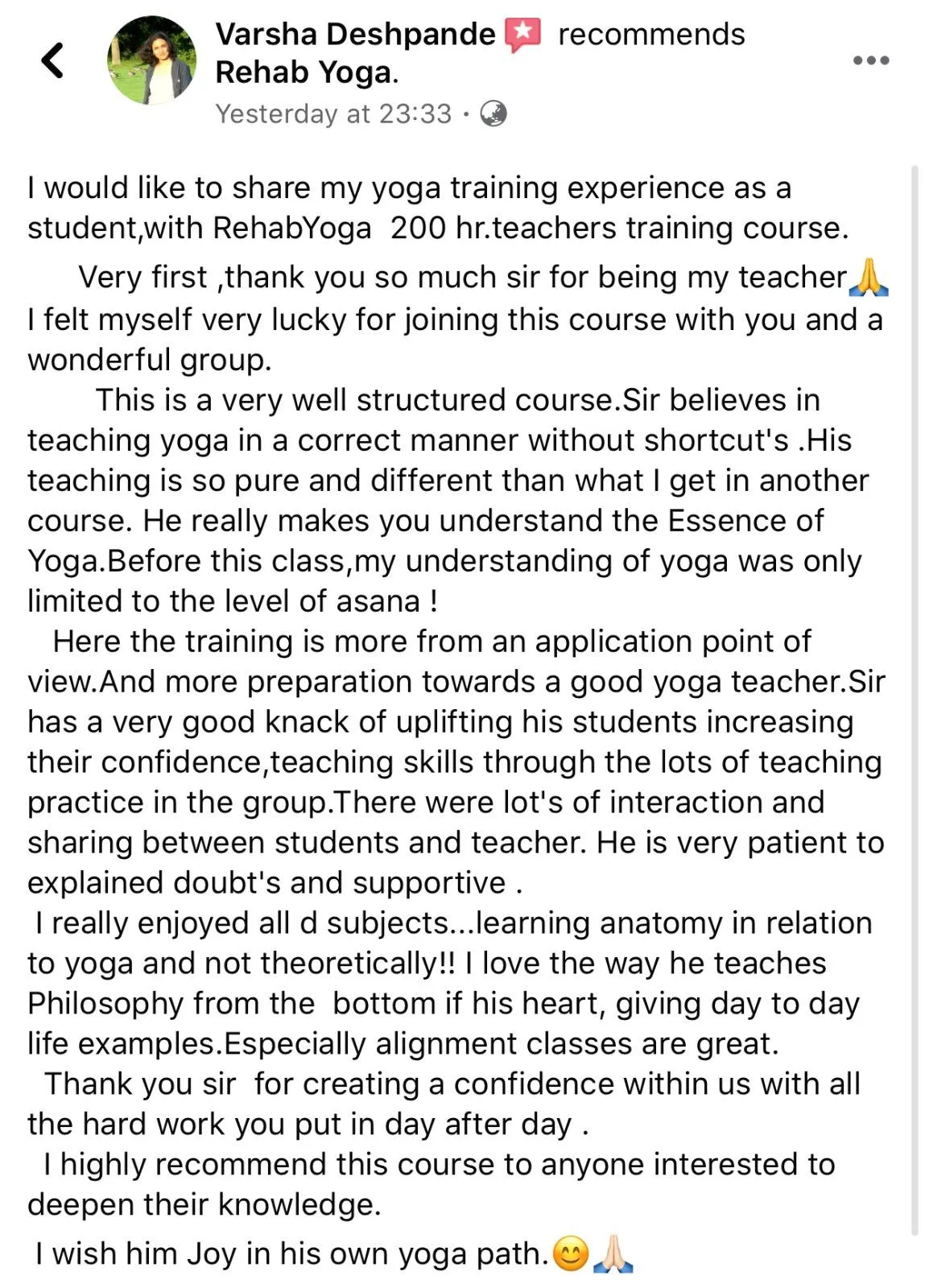
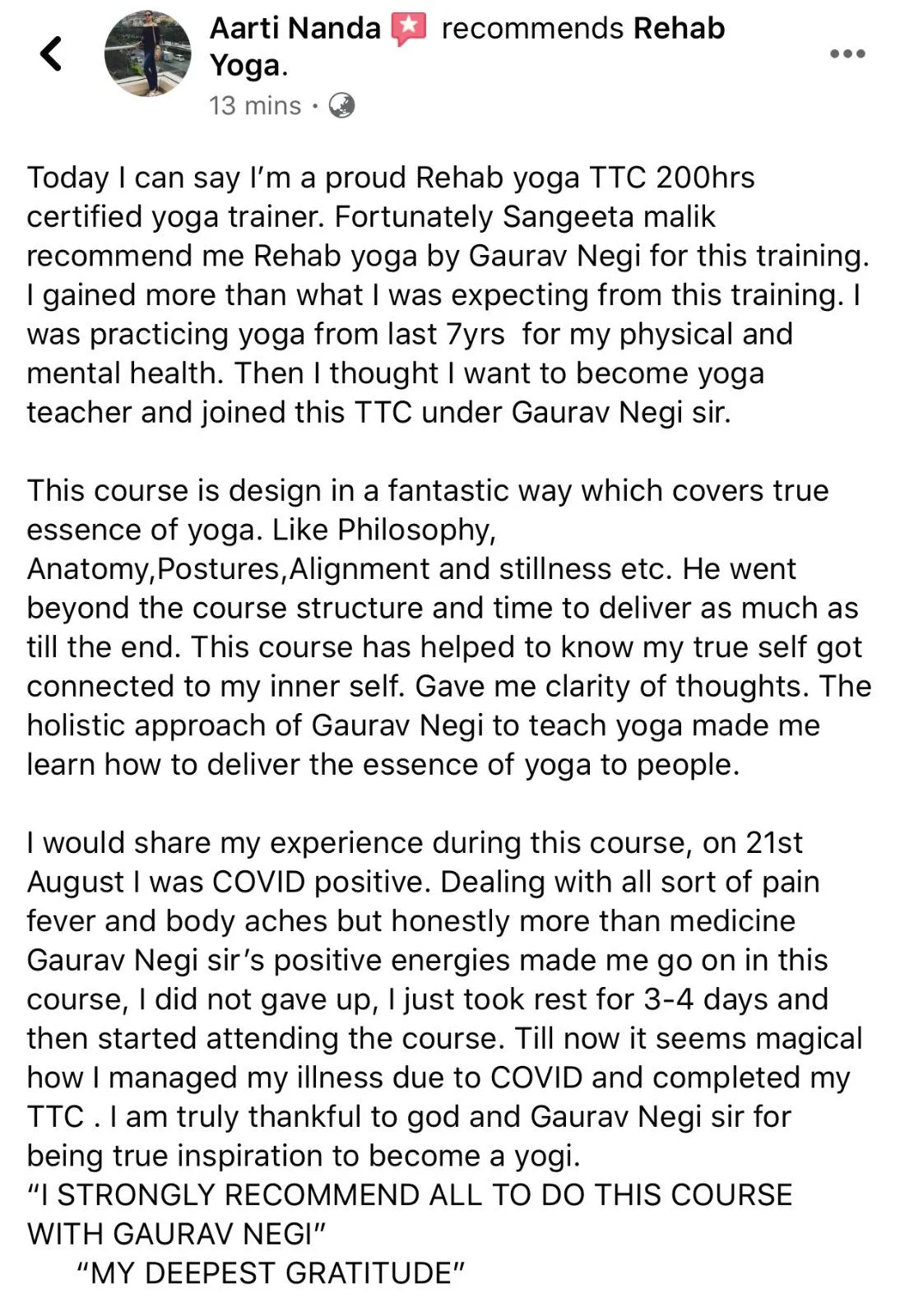
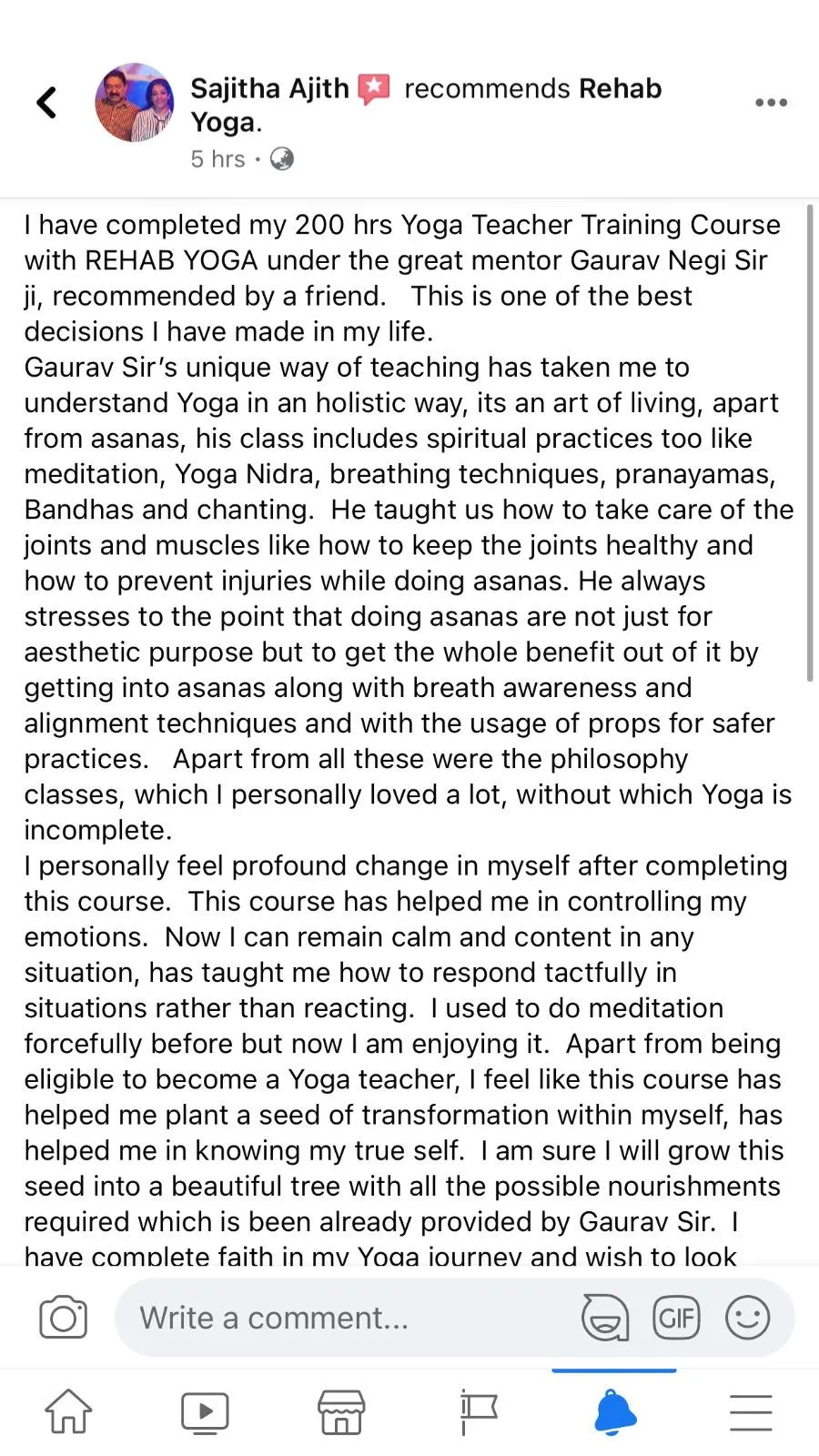
Vandana Khurana
Corporate Employee
Mona Mistry
Fitness Professional
Vanya Bansal
Yoga Enthusiast
Turn Your Passion into a Profession and Gain Recognition
Our webinar not only teaches the art of yoga but also provides insights on how to turn your yoga practice into a professional journey. Create a unique identity, gain recognition, and connect with like-minded people who value the power of yoga.
FAQ
Is this webinar suitable for beginners?
Yes, this webinar is designed for yoga enthusiasts of all levels, including beginners. You'll receive guidance suited to your experience level.
What do I need for the webinar?
You’ll need a stable WiFi connection, a laptop or mobile device, a notepad for taking notes, and a positive, transformational mindset!
Will I be able to watch a replay?
No, there will not be a replay available, so join us live to gain the full experience.
Can I get personalized guidance during the webinar?
Yes, personalized guidance will be provided to all participants who will stay in the webinar till the end after the session to support your unique journey and goals.
Follow Us: